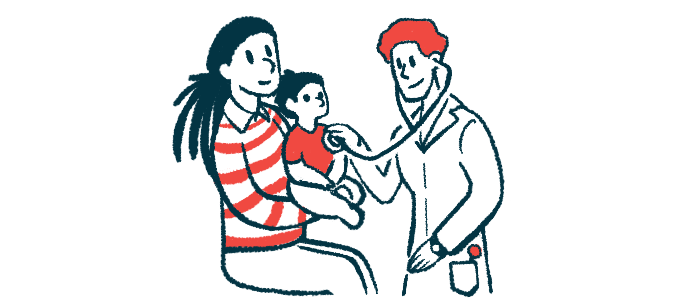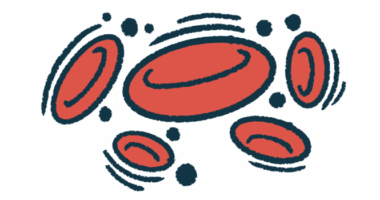Most pediatric AIHA cases respond to first-line treatment: Study
Treatment choice for younger patients remains a challenge

Most children and adolescents with autoimmune hemolytic anemia (AIHA) — a group of rare conditions that includes cold agglutinin disease (CAD) — respond well to the recommended first-line treatment for adult patients, a study found.
The retrospective, single-center study in Brazil found that only a minority of pediatric AIHA patients required second- and third-line treatment.
Among the three pediatric CAD patients included in the study, one experienced spontaneous recovery, another responded to steroids, and the third needed second- and third-line treatment.
Still, treatment of choice remains a challenge for this younger patient population, the researchers noted, with multicenter studies following patients over time being “essential to understand this severe immune condition and to address the best therapeutic combinations.”
The study, “Pediatric autoimmune hemolytic anemia: A single-center retrospective study,” was published in the journal Hematology, Transfusion and Cell Therapy.
AIHA study followed 24 children
AIHA comprises a group of conditions in which the body’s immune system produces self-reactive antibodies that wrongly attack red blood cells, resulting in too few red blood cells (anemia) and poor oxygen transport throughout the body.
It can be classified as CAD, warm AIHA, or mixed AIHA, depending on whether the antibodies bind more easily to red blood cells at lower temperatures, higher temperatures, or both. Warm AIHA is the most common type, with CAD accounting for up to 25% of AIHA cases.
AIHA is said to be primary when its cause is unknown, and secondary when it occurs due to an underlying condition, generally a blood cancer, an infection, or another autoimmune disease.
The therapeutic recommendations for pediatric AIHA are mostly reliant on those of adult patients.
Researchers in Brazil described the clinical features, diagnosis, treatment, and outcomes of 24 children and adolescents with AIHA who were followed at a public hospital in São Paulo, Brazil, from 2006 to 2021.
The patients’ median age at diagnosis was 5.99 years, and 14 of them were girls. Most patients (83.3%) were diagnosed with warm AIHA, three with CAD (12.5%), and one (4.1%) with mixed AIHA. All CAD patients were girls, and their age at diagnosis ranged from 2.4 to 8.5.
At diagnosis, 87.5% of all patients had severe anemia, as shown by severely low levels of hemoglobin, the protein responsible for transporting oxygen in red blood cells.
The most common symptoms included pallor (95.8%), fatigue or lethargy (79.1%), jaundice (37.5%), and fever (33.3 %). Jaundice refers to the yellowing of the skin or whites of the eyes. An enlargement of the spleen, a condition called splenomegaly, was found in eight patients (33.3%), including one with CAD.
Data up to the last clinical visit suggested that most patients had secondary AIHA, 12 (50%) due to a known underlying condition, and four (16.7%) likely caused by infections. Three cases (12.5%) were possibly associated with vaccination, with first symptoms appearing within a median of 8.5 days after vaccination.
In five patients (20.8%), including one with CAD, the disease was classified as primary. No first-degree relative had an autoimmune disease.
Most patients received first-line treatment with steroids, alone or in combination with intravenous immunoglobulins (IVIG). IVIG delivers specific antibodies purified from healthy people to neutralize self-reactive antibodies in the patient’s bloodstream and block the abnormal production of these antibodies.
More than three-quarters responded to first treatment
More than three-quarters (78.3%) responded to first-line treatment.
Seven patients (29.1%) required second and third-line treatments. These included the immunosuppressive medications rituximab (sold as Rituxan, among others) and/or cyclophosphamide, and/or splenectomy (surgical removal of the spleen).
Patients were followed for a median of 4.4 years after diagnosis. Five patients, including two with CAD, were lost to follow-up, and all remaining patients experienced complete response. A complete response was defined as normal levels of hemoglobin levels according to patient’s age, without the need for blood transfusions and no signs of red blood cell destruction.
Among the CAD patients, one of the girls developed the disease secondary to a viral infection, and showed spontaneous CAD resolution 11 days after the infection was diagnosed.
The girl diagnosed with primary CAD was reported to respond to first-line treatment with steroids and IVIG, but was lost to follow-up.
The third girl had CAD that was highly resistant to treatment, failing to respond to steroids and IVIG, and needing second- and third-line treatment with rituximab, cyclophosphamide, and splenectomy.
She was also lost to follow-up, but ultimately received a diagnosis of secondary CAD associated with a type of primary immunodeficiency, a group of conditions marked by a deficiency or malfunction of a part of the immune system.
The study shows that most of pediatric AIHA cases are “secondary to an underlying … disease or have a possible correlation with infections/vaccines and respond to steroids,” the researchers wrote.
“A minority of patients received second and third-line therapies, the definition of which remains a dilemma,” the team wrote.








